
Becoming an educated consumer is not such an easy matter when dealing with all the variables related to the purchase of a colored gemstone. These many variables will determine the quality, therefore the price.
In general, the quality and value of a gemstone is determined by a combination of what are called the "Four C's":
Color, Clarity (degree of flawlessness), Cut and Carat weight.
Treatments also should be added to the list, as they play a very important role in today's evaluation of quality and price. If a stone is left untreated, in a nowadays market filled with treatments of all sorts, it acquires a very substantial value over a gem that has been treated.
Clarity is the degree of flawlessness. As a general rule, a clear transparent gemstones with no visible flaws is the most valued.
GIA (Gemological Institute of America) classifies colored gems clarity of three types:
Type 1 gemstones, "virtually inclusion-free" such as aquamarine, topaz, green tourmaline, tanzanite, citrine, damburite.
Type 2 gemstones, "usually included" such as rubies, all color sapphires, garnets, peridots, amethysts, zircons, cat's eye chrysoberyls, pearls, corals.
Type 3 gemstones, almost "always included", such as emeralds and red tourmalines.
Some gemstones are valued for their inclusions! Phenomenal gemstones owe their stars and eyes to inclusions. Tiny inclusions reflecting back light put the eye in the so called "cat's eye" and the "star" in the star sapphire. Inclusions can also be a birthmark, telling us where a particular gemstone was mined.
As a general rule, look for eye flawless stones. If the inclusions are too numerous, too visible to the naked eye and/or distracting, avoid such stones.
Color is another key factor. A common misperception in judging gems is that people assume that the darker the color, the better the stone. That isn't true: color can be too dark, like some "blue" sapphires that look more black than blue.
| | |
If a gem's color is too dark, it is subdued and lifeless. A much better rule of thumb is the brighter and more rich and vivid the color, the better. In general, within each gemstone variety, a clear, medium or medium-dark tone, very intense and saturated primary color is the most preferred. Muted colors or colors between hues, which you might find very attractive, are usually a bit less expensive. Look at the color in different kinds of light. Sometimes, in daylight, a gem shows one color and in artificial light another one. This color change gems are usually very attractive and in most case expensive. (alexandrite is the most well known example, but sapphires, garnets, and occasionally spinels can also change color).
Let's talk about the cutting in a gemstone. It use to be that a good Cut was something that did not cost more. Nowadays, a good cut stone is worth much more than a badly cut one. A savvy consumer knows that a well cut gemstone can add or subtract a lot of beauty. And beauty (together with rarity and freedom from enhancement...basically) is what we pay in a gemstone. A well-cut, faceted gemstone reflects light back
 | 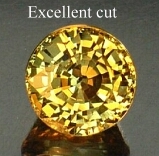 |
evenly across its surface area when held face up. If the stone is too deep and narrow, areas will be dark. If it is too shallow and wide, the stone will be washed out and lifeless (the so-called window). The best way to judge cut is to look at similar gemstones next to each other.
The weight of a gemstone is measured in Carats and points. There are 100 points in one carat, and 1 carat equals to one-fifth of a gram. As a rule, the price increases per carat as we go from smaller to larger stones, since the larger stones are more limited in supply. However, the price does not increase proportionately - there are disproportionate jumps. And the larger the stone (all else being equal in terms of overall quality), the more disproportionate the increase in cost per carat may be.
We will talk about the general beliefs that most people have when approaching Jyotish Gemology. Yet, beliefs and theories are so many that we felt the urge to clarify and... simplify.
It is a widespread concept that a potent Jyotish gemstone should be of flawless clarity, untreated, and of a certain carat weight. These are the most commonly accepted features for a good, Jyotish gem. I would add that a good gem should have a fair price as well, and this also will depend by many factors.
Let's first talk about clarity, classified as the degree of flawlessness. As a rule, a clear, transparent gemstones with no visible flaws is the most valued.
GIA (Gemological Institute of America) classifies colored gems clarity of three types:
Type 1 gemstones, "virtually inclusion-free" such as aquamarine, topaz, green tourmaline, tanzanite, citrine, damburite.
Type 2 gemstones, "usually included" such as rubies, sapphires, garnets, peridots, amethysts, zircons, cat's eye chrysoberyls, pearls, corals.
Type 3 gemstones, almost "always included", such as emeralds and red tourmalines.
As per the most widespread and accepted Jyotish, gemological principle, a propitious gem SHOULD be flawless. Most of the Jyotish astrologers would mention this characteristic as the primary one for auspicity and good fortune. It is also alluded in the Vedic scriptures dealing with gemology that "inward luster, transparency, illumination with rays, sparkle, free from impurities and good formation of the shape are the characteristics of good gems" (Agni Purana, 246.13-14)
As per the GIA classification above, expect to get flawless gems in type1category. These gems can, however, be increasingly harder to get in flawless clarity in large sizes, let's say above 10 cts.
Type2 gemstones include basically all the nine, primary Jyotish gems such as rubies, all colors sapphires, including yellow, blue, white, all garnets (including hessonite), chrysoberyl cat's eyes, pearls, and corals. So expect to get the majority of them, "usually included" (see the GIA classification about clarity above)
| This picture of a 19th century, Indian navaratna (kindly permitted by a friend, private collector) shows well enough the poor clarity of each gem. They are all opaque to translucent at the most, except for possibly for the uncut brown diamond, the orange hessonite, the center emerald, that look to have a certain degree of transparency. So, if a Jyotish gem should be flawless, then, why all the gems used in this gorgeous Indian navaratna are NOT flawless (not even eye clean)? Because natural, untreated gemstones are NOT easily available in complete flawless clarity. Thus, when choosing a Jyotish stone, look for "eye" flawless clarity. In other words, an auspicious Jyotish gem should be appear flawless when view closely. Remember that emeralds are an exception, as they are type3 gems, and almost always included. Emeralds will always have some imperfections internally and/or externally. But again, it is important that the "jardin" or emerald inclusions are few, not distracting, and the overall presence is transparent and enjoyable. |
A few words about color...We think that color is not a key factor in a Jyotish quality gem. Although color is paramount in determining a colored stone value in today's market, combined with the other variables of clarity, cut and carat weight, there is no scientific proof that, for astrological purposes, a darker stone versus a lighter one has more power or vice versa. As we see it, it is a karmic choice.
Let me explain... If somebody makes $50,000 per month, it will not have great problems in purchasing a top, colored gem of good carat weight of few thousands dollars. On the other hand, if another person has not access to a big amount of cash, he or she, instinctually will go for a less expensive, lighter tone gem. It is our present karmic situation that will determine our preferences and choices. In both cases, both stones, the more expensive and the less expensive will effectively be suitable in terms of astrological power, for those particular people.
Sticking with gemological facts and forgetting for a moment the "spiritual" component (by the way...some people are also selling for hard cash the spiritual component of Jyotish gemology...by keeping prices artificially high and not reflecting the exact market value of their products) keep in mind that in gemmy colors (gemmy color means that a colored gem has the finest color found), light imperfections are totally accepted and forgiven, as a top color gem is always very rare, especially in larger sizes over 2 ct. or 3 ct. "Gem quality" stone is a specimen that has top color (usually a medium-dark, well saturated primary color, without being too dark or blackish), top clarity (note that I did not say perfect clarity) and is, let's say, over 2 or 3 ct. in size. (But again, gemological experts emphasize that gem quality is anything over 5 ct. in size for most gemstones).
On the other hand, lighter colors should have excellent clarity, should be well cut and should be relatively less costly compared to gem quality stones.
| | ||||||
|
So far, we have seen which clarity to look for in an effective Jyotish gem. We have also clarified a bit about color as well.
First question is: Are untreated gems readily available in today's market place? |

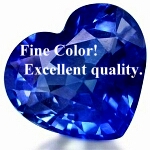
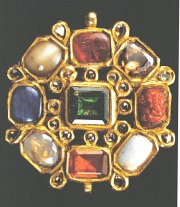
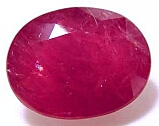
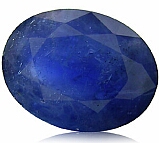
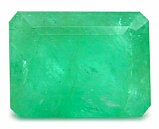
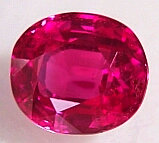
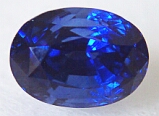
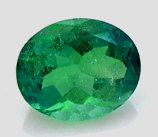
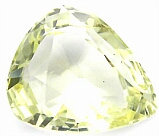
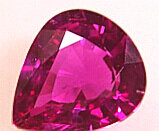
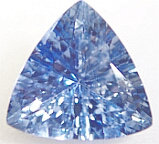
0 comments:
Post a Comment